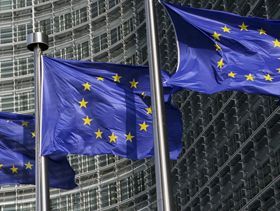
|
TOPLEA MACHINERY IMP &.EXP CO.,LTD
|
Gold Index: 15103
You are here: home > Poultry News > Further Expansion of EU Poultry Meat Sector Expected
Product (155)
- Slaughterhouse Equipment (84)
- Poultry Farming Equipment (7)
- Cold Room (19)
- Rendering Equipment (22)
- Food Processing Equipment (23)
Poultry News (81)
Industry News (34)
Lay Out Reference (1)
INTRODUCTION TO THE POULTRY PROCESSING INDUSTRY (11)
Blog (23)
Cooperation company (9)
News (10)
Credit Report
Products Index
Poultry News
Further Expansion of EU Poultry Meat Sector Expected

EU - The European Commission has said in its latest Short-term Outlook report that production in 2015 has increased compared with 2014, and that this growth could continue at a lesser pace into 2016.
The report said production in the first half of 2015 increased by 3.6 per cent compared to the same period of 2014, and overall production for 2015 is expected to be around 2.6 per cent over the 2014 figure (13.6 million tonnes).
In contrast with the overall mood, Germany slightly decreased its slaughterings over the same period (-0.4 per cent).
Exports expanding despite Russian market loss
The report says that EU poultry meat exports expanded by 2 per cent in the first half of the year. The Philippines, Benin, Saudi Arabia and Ghana are the export destinations that contributed the most to compensate for the loss of the Russian market.
Exports to Ukraine are further increasing, reaching 27,500 tonnes in the first half of the year.
As with pig meat, a shift between decreasing exports to Hong Kong and expanding exports to China is visible.
Throughout 2015, exports might grow by 3.5 per cent to reach 1.4 million tonnes driven by the strong demand from some Asian and African countries.
Despite the anti-dumping measures taken by South Africa against several EU companies and its support to domestic industry, the EU continues to ship important volumes to this destination (85 000 tonnes in first half of 2015).
The overall 2016 EU export growth is expected to be limited to 25 000 tonnes when compared to 2015 as more competition is expected from the US and Brazil on the world market (China, Saudi Arabia, etc. …).
Thailand fills import gap as Brazil looks elsewhere
According to the report, EU poultry meat imports in the first half of 2015 also increased by 2 per cent.
Volumes coming from Brazil showed a strong decline (a reduction of 25,000 tonnes) as Brazil increased its exports to non-EU markets and the internal economic downturn reduces domestic beef meat sales to the benefit of cheaper meats like poultry. The report said that Thailand easily filled this gap despite the internal political tensions.
The poultry tariff rate quotas attributed to Ukraine within the framework of the bilateral free trade agreement with the EU explain the sudden surge of their exports to the EU (+13,500 tonnes), though still far below their poultry imports from the Union.
Poultry consumption to increase more slowly through 2016
After a drop at the end of April, poultry meat prices have recovered and were floating the last months within the narrow band of 190-195 EUR/100 kg c.w., before showing the first signs of the seasonal decline expected in September and October.
After the strong increase in 2014, EU per capita consumption is expected to increase at a slower pace to 22.5 kg and 22.7 kg c.w. in 2015 and 2016 respectively.
Pre Page:
New UK Poultry Slaughter Rules Pose...
Next Page:
Bulgarian Chicken Meat Output Increasing...




